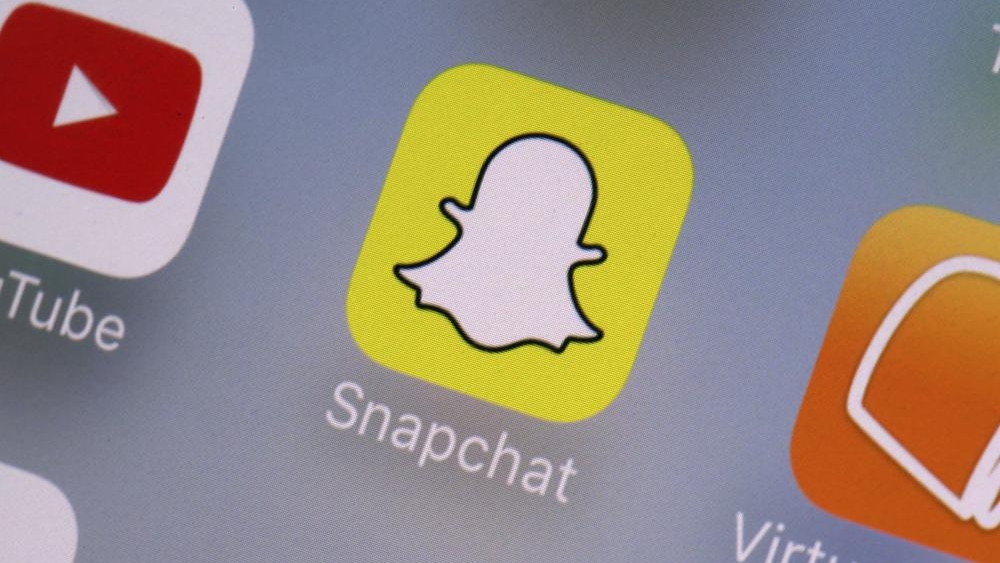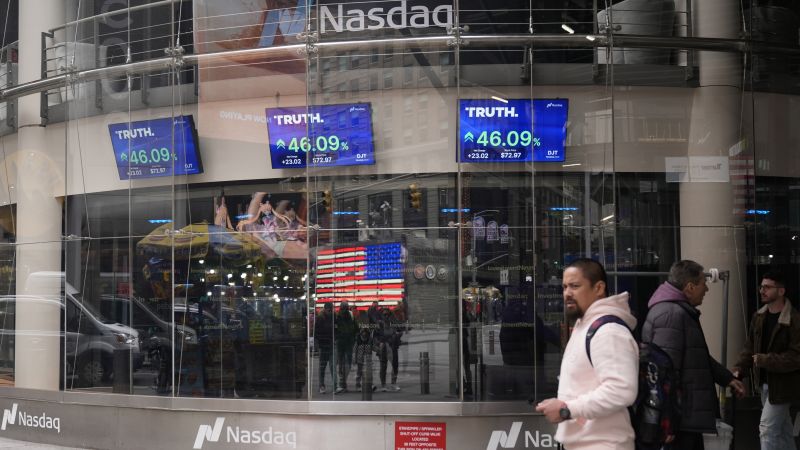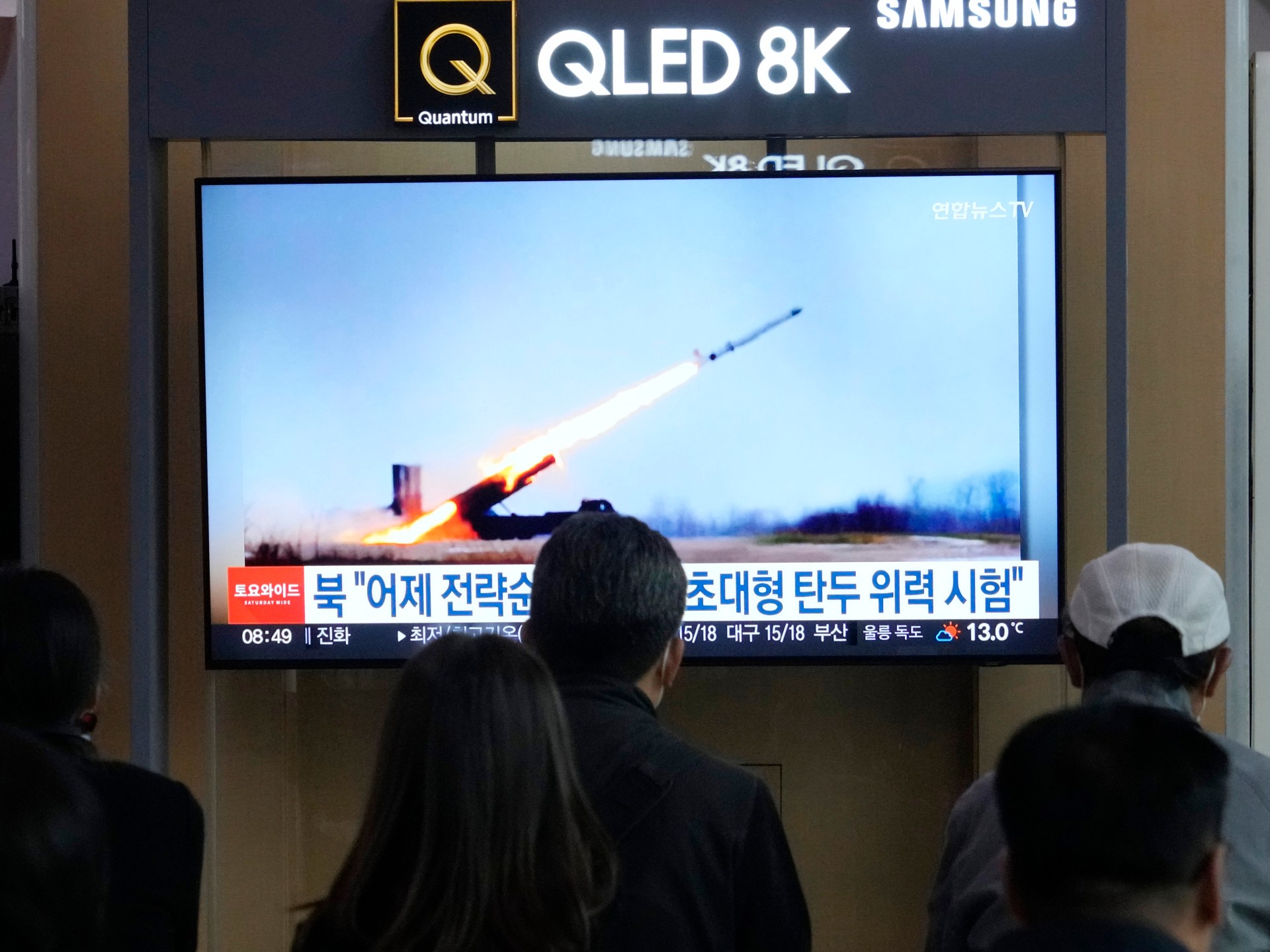Media
Social media: Do parental controls actually help? – CTV News


As concerns about social media’s harmful effects on teens continue to rise, platforms from Snapchat to TikTok to Instagram are bolting on new features they say will make their services safer and more age appropriate. But the changes rarely address the elephant in the the room — the algorithms pushing endless content that can drag anyone, not just teens, into harmful rabbit holes.
The tools do offer some help, such as blocking strangers from messaging kids. But they also share some deeper flaws, starting with the fact that teenagers can get around limits if they lie about their age. The platforms also place the burden of enforcement on parents. And they do little or nothing to screen for inappropriate and harmful material served up by algorithms that can affect teens’ mental and physical well-being.
“These platforms know that their algorithms can sometimes be amplifying harmful content, and they’re not taking steps to stop that,” said Irene Ly, privacy counsel at the nonprofit Common Sense Media. The more teens keep scrolling, the more engaged they get — and the more engaged they are, the more profitable they are to the platforms, she said. “I don’t think they have too much incentive to be changing that.”
Take, for instance, Snapchat, which on Tuesday introduced new parental controls in what it calls the “Family Center” — a tool that lets parents see who their teens are messaging, though not the content of the messages themselves. One catch: both parents and their children have to opt into to the service.
Nona Farahnik Yadegar, Snap’s director of platform policy and social impact, likens it to parents wanting to know who their kids are going out with.
If kids are headed out to a friend’s house or are meeting up at the mall, she said, parents will typically ask, “Hey, who are you going to meet up with? How do you know them?” The new tool, she said, aims to give parents “the insight they really want to have in order to have these conversations with their teen while preserving teen privacy and autonomy.”
These conversations, experts agree, are important. In an ideal world, parents would regularly sit down with their kids and have honest talks about social media and the dangers and pitfalls of the online world.
But many kids use a bewildering variety of platforms, all of which are constantly evolving — and that stacks the odds against parents expected to master and monitor the controls on multiple platforms, said Josh Golin, executive director of children’s digital advocacy group Fairplay.
“Far better to require platforms to make their platforms safer by design and default instead of increasing the workload on already overburdened parents,” he said.
The new controls, Golin said, also fail to address a myriad of existing problems with Snapchat. These range from kids misrepresenting their ages to “compulsive use” encouraged by the app’s Snapstreak feature to cyberbullying made easier by the disappearing messages that still serve as Snapchat’s claim to fame.
Farahnik Yadegar said Snapchat has “strong measures” to deter kids from falsely claiming to be over 13. Those caught lying about their age have their account immediately deleted, she said. Teens who are over 13 but pretend to be even older get one chance to correct their age.
Detecting such lies isn’t foolproof, but the platforms have several ways to get at the truth. For instance, if a user’s friends are mostly in their early teens, it’s likely that the user is also a teenager, even if they said they were born in 1968 when they signed up. Companies use artificial intelligence to look for age mismatches. A person’s interests might also reveal their real age. And, Farahnik Yadegar pointed out, parents might also find out their kids were fibbing about their birth date if they try to turn on parental controls but find their teens ineligible.
Child safety and teen mental health are front and center in both Democratic and Republicans critiques of tech companies. States, which have been much more aggressive about regulating technology companies than the federal government, are also turning their attention to the matter. In March, several state attorneys general launched a nationwide investigation into TikTok and its possible harmful effects on young users’ mental health.
TikTok is the most popular social app U.S. teenagers use, according to a new report out Wednesday from the Pew Research Center, which found that 67% say they use the Chinese-owned video sharing platform. The company has said that it focuses on age-appropriate experiences, noting that some features, such as direct messaging, are not available to younger users. It says features such as a screen-time management tool help young people and parents moderate how long children spend on the app and what they see. But critics note such controls are leaky at best.
“It’s really easy for kids to try to get past these these features and just go off on their own,” said Ly of Common Sense Media.
Instagram, which is owned by Facebook parent Meta, is the second most popular app with teens, Pew found, with 62% saying they use it, followed by Snapchat with 59%. Not surprisingly, only 32% of teens reported ever having used Facebook, down from 71% in 2014 and 2015, according to the report.
Last fall, former Facebook employee-turned whistleblower Frances Haugen exposed internal research from the company concluding that the social network’s attention-seeking algorithms contributed to mental health and emotional problems among Instagram-using teens, especially girls. That revelation led to some changes; Meta, for instance, scrapped plans for an Instagram version aimed at kids under 13. The company has also introduced new parental control and teen well-being features, such as nudging teens to take a break if they scroll for too long.
Such solutions, Ly said, are “sort of getting at the problem, but basically going around it and not getting to the root cause of it.”
Media
Trump Media warns Nasdaq of suspected market manipulation – CNN


New York
CNN
—
Trump Media, the parent company of the former president’s Truth Social, alerted Nasdaq Inc. on Thursday of what the company suspects is illegal activity driving down the price of its shares.
In a letter to the exchange, Devin Nunes, the CEO of Trump Media (DJT), laid out what he believes could be deemed “naked” short selling.
Naked short selling involves someone selling shares they don’t own or have not borrowed. They will often then try to buy shares at a reduced price to cover themselves. This practice is generally illegal. Whereas legitimate short sellers, people who seek to benefit from declines in the value of a company’s shares, borrow the shares before selling.
The letter was made public Friday in a filing with the Securities and Exchange Commission.
Nunes also noted in the letter that shares of the company were on a list the Nasdaq maintains that’s “indicative of unlawful trading activity.”
“This is particularly troubling given that “naked” short selling often entails sophisticated market participants profiting at the expense of retail investors,” he said.
Representatives from Nasdaq and Trump Media did not immediately respond to requests for comment.
The company, which is majority-owned by former President Donald Trump, is down by around 50% from the all-time high it set on March 26, the day after it merged with a blank-check acquisition company to go public.
Shares of company have been on a wild ride since.
Although the company is still worth billions of dollars, it is struggling to make money and needs cash. Experts have warned investors to be careful if they choose to trade the stock, because the company doesn’t have the fundamentals to back up its sky-high valuation.
Trump Media lost $58 million in 2023 and made just $4.1 million in revenue.
Shares of the company ended Friday’s session about 9.6% higher.
This story has been updated with additional developments and context.
CNN’s Nicole Goodkind contributed to this report.
Media
Social Media Tips for Event Profs – BizBash


Social media changes rapidly—and what worked last year might not work in 2024. (Just look at X’s, or Twitter’s, dramatic revenue loss after many major platforms have stopped posting or advertising on the platform.) So what does work on social media right now, particularly for event professionals?
“We don’t just want our audience to understand what we do—we want them to know who we are,” says Zoe Haynes, the sales and marketing coordinator for PlatinumXP who oversees the event planning agency’s digital marketing. “Social media has evolved into a space for cultivating relationships and building trust. We utilize various platforms to tell stories—the story of an event transformation, behind the scenes with our production crew, or maybe even some fun office shenanigans with our CEO.”
Haynes’ focus on maintaining a consistent, authentic brand presence was a common theme among event professionals we spoke to about how they’re using social media right now. It’s all about “fostering an ongoing connection with our followers,” agrees Elias Contessotto, social media manager for event production company 15|40.
But remember: Not every platform is created equal. Contessotto stresses the importance of tailoring your approach with each platform—but also not being afraid to experiment a bit to ensure you’re staying ahead of trends and maximizing audience engagement. “By creatively testing new tactics, we gauge audience response and efficacy, gradually integrating successful approaches into our channels,” he explains. “This iterative process empowers us to refine our content strategy continuously, adapting to evolving trends and audience preferences.”
In short, “It’s all about meeting your audience where they’re at,” says Taylor Elliot, vice president of marketing and brand strategy for Shepard Exposition Services. “Social media is such a great tool to amplify your brand voice. I always say as marketers we need to create a system that works for our brand even when we are sleeping, and social media is one of the tools to help achieve this.”
LINKEDIN & INSTAGRAM
From our conversations, LinkedIn and Instagram quickly emerged as the two top platforms in the event industry. “Instagram is our go-to for showcasing stunning event photos—however, LinkedIn holds equal if not greater importance in our strategy,” explains Haynes. “While Instagram captures attention with its visual allure, LinkedIn allows us to dive deeper into industry conversations and build relationships with our peers.”
Contessotto likes to target a B2B audience with 15|40’s LinkedIn presence, posting content that focuses on industry insights, professional networking, and collaborations with studios. “We often share static posts similar to those on Instagram, tagging relevant studios to expand our reach,” he says, noting that LinkedIn posts are often reshared by team leaders and executives. “LinkedIn [also] serves as a prime platform for spotlighting press coverage, award nominations, and industry highlights.”
On Instagram, meanwhile, Contessotto expands 15|40’s content to cater to both B2B and B2C audiences. “We share visually engaging posts that highlight our expertise, industry leadership, and collaborations, appealing to a wider range of followers,” he says. “Instagram will have ‘POV’ content, which is much more personal and requires less high-quality tools to tell our story. I came to 15|40 from an influencer background, and from experience, I notice that more amateur content does better on that platform, like using an iPhone for reels rather than a DSLR camera.”
Heather Rouffe, director of sales at Atlas Event Rental, also appreciates the more personal touch that can come with Instagram. “Through that platform, we strive to educate the industry, create brand awareness, and most importantly to us, show the personal side to our company, brand, and rentals,” she explains. “With so much of the human side of things lost in a digital age, being personable and showing the people behind the brand is very important to us. We find the clients really appreciate the behind-the-scenes content and becoming familiar with the Atlas crew.”
On the flip side, though, that doesn’t mean LinkedIn can’t get a little personal. Al Mercuro, senior account director at trade show display company Genesis Exhibits, prioritizes LinkedIn due to the connections he’s been able to make with marketing directors and event directors at companies he’d like to do business with.
“I try to not promote my company as much as my brand by sharing information that will help them in their jobs—I find I get many referrals this way,” Mercuro notes. “I believe it is also a living resume; before I meet with someone, they will often check out my LinkedIn page to learn more about me. The more you can build up your profile and the number of connections you have adds to your value and makes it attractive to have them want to work with you.”
Jonathan Kazarian, the founder and CEO of Accelevents, also uses LinkedIn to build up his personal thought leadership—and therefore, build awareness of his event management software company. “Ninety-nine percent of what I share on LinkedIn is professional,” he says. “I’ll share something about my personal life to build connection, but that’s not my focus with LinkedIn.”
FACEBOOK, TWITTER (X), TIKTOK, & MORE
In a sign of changing times, most of the event professionals we spoke with are not investing much in Facebook or Twitter (now known as X)—though many are still updating them.
“We push out all of our Instagram content to our Facebook, to ensure our followers and intended audiences on both platforms are receiving similar content,” says Contessotto. “We also maintain our Twitter, or X, channel to share some of our event photos, as well as retweet content that clients we work with post that are captured at our events.”
Mercuro finds that Facebook is still an effective way to reach older generations—but for younger generations, he’s found some success marketing events on TikTok. “I am a board member of a nonprofit concert venue, and we needed to attract a younger audience,” he remembers. “I suggested we work with a local university and their marketing classes to take on a project like our organization to give them real-life experience. They chose to use TikTok to reach the younger demographics in our area, and it has been extremely successful.”
Contessotto agrees that TikTok is naturally very Gen Z-oriented, so content should be tailored accordingly. “We’ve noticed that we typically receive high engagement when our content is celebrity-focused,” he says. “Our team is constantly working to balance out our TikTok pages to include viral content, as well as videos that highlight our diverse portfolio of work to attract the right kind of audience.”
Haynes says she’s still exploring TikTok’s potential for Platinum XP. “I’ve noticed its popularity as a discovery platform,” she says. “It’s a great tool for driving awareness, but we should also consider whether our target audience is active on TikTok.” One tool that Haynes does invest time in? Pinterest. “It’s a powerful tool for SEO purposes. Its visual nature allows us to drive awareness to our website through captivating photos. By sparking curiosity, we encourage users to click through and explore further.”
Media
North Korea conducts test on new ‘super-large warhead’: State media – Al Jazeera English


Pyongyang says new warhead designed for cruise missiles, adding that a new anti-aircraft rocket was also tested.
North Korea has conducted a test on a “super-large warhead” designed for a strategic cruise missile, state media reports, adding that it also launched a new type of anti-aircraft missile.
“The DPRK Missile Administration has conducted a power test of a super-large warhead designed for ‘Hwasal-1 Ra-3’ strategic cruise missile”, KCNA news agency reported on Saturday, referring to North Korea by an abbreviation for its official name – Democratic People’s Republic of Korea.
North Korea also carried out a test launch on Friday afternoon of a “Pyoljji-1-2”, which state media said was a “new-type anti-aircraft missile”.
KCNA added that “a certain goal was attained” through the test without providing further details.
The weapons tests were part of the “regular activities of the administration and its affiliated defence science institutes”, KCNA reported, referencing the operation of “new-type weapon systems”.
The tests “had nothing to do with the surrounding situation”, KCNA added, but did not give any further information.
In early April, North Korea said it had tested a new medium-to-long-range solid-fuel hypersonic missile, with state media sharing a video of it being launched as leader Kim Jong Un looked on.
Cruise missiles are among a growing collection of North Korean weapons designed to overwhelm regional missile defences. They supplement the North’s vast arsenal of ballistic missiles, including intercontinental variants, which are said to be aimed at the continental United States.
Analysts say anti-aircraft missile technology is an area where North Korea could benefit from its deepening military cooperation with Russia, as the two countries align in the face of their separate, intensifying confrontations with the US.
The US and South Korea have accused the North of providing artillery shells and other equipment to Russia to help extend its warfighting ability in Ukraine.
Since its second nuclear test in 2009, Pyongyang has been under heavy international sanctions, but the development of its nuclear and weapons programmes has continued unabated.
-
Media19 hours ago
DJT Stock Rises. Trump Media CEO Alleges Potential Market Manipulation. – Barron's
-
Media21 hours ago
Trump Media alerts Nasdaq to potential market manipulation from 'naked' short selling of DJT stock – CNBC
-
Investment20 hours ago
Private equity gears up for potential National Football League investments – Financial Times
-
Real eState12 hours ago
Botched home sale costs Winnipeg man his right to sell real estate in Manitoba – CBC.ca
-
News18 hours ago
Canada Child Benefit payment on Friday | CTV News – CTV News Toronto
-
Business20 hours ago
Gas prices see 'largest single-day jump since early 2022': En-Pro International – Yahoo Canada Finance
-
Art23 hours ago
Enter the uncanny valley: New exhibition mixes AI and art photography – Euronews
-



 Politics21 hours ago
Politics21 hours agoIran news: Canada, G7 urge de-escalation after Israel strike – CTV News




